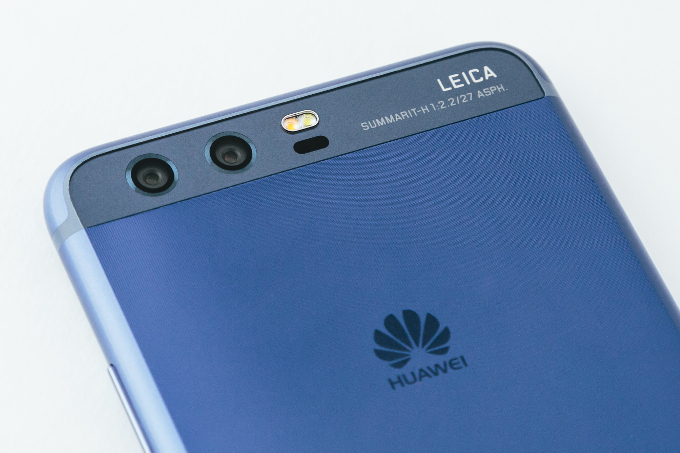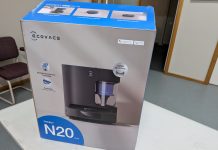
There’s been a bit of controversy around the soon-to-be-launched Huawei P10, and I’m not entirely convinced that it’s more than a storm in a teacup. It all comes down to componentry; basically, inside your P10 (and P10 Plus, it appears) there are varying combinations of RAM and Flash storage components.
For RAM, there’s either LPDDR3 or LPDDR4 chips, and storage can be one of UFS 2.0, UFS 2.1 or eMMC 5.1 storage. Why’s this the case? Huawei’s statement makes the answer pretty clear:
“Huawei has employed the standard industry practice of sourcing solutions from multiple trusted suppliers to ensure a balance between user experience, quality and sustainable supply,” the company said.
Huawei aren’t the first manufacturer to source components from different sources, and they’re not the first to use different specs either; Apple does it with modem chips in its iPhone 7 Plus (using components from Qualcomm or Intel), and Samsung uses Qualcomm or Exynos chips.
Apple’s choice of chip seems to vary by which carrier support you prefer, and Samsung’s choice of processor varies by market.
That is, unless, you take Samsung’s most recent example — the Galaxy S8. You see, it isn’t just Huawei that does this — even your most popular phone brands do it too.
Apparently, the Samsung Galaxy S8 and the Galaxy S8+ could feature either UFS 2.0 or UFS 2.1 for the storage. Promotional material from Samsung early on boasted of UFS 2.1 for its storage, but eagle-eyed XDA Senior Member lch920619x spotted the silent removal of mentions of UFS 2.1 for storage on Samsung’s official webpage for the devices. Benchmarks have confirmed the variance too.
In Huawei’s case, we’re told by Australian sources, that there’s no consistent pattern within or between batches that determine exactly what goes into a P10 or P10 Plus handset. So, let’s dig a little into what these different components actually mean.
Memory
LPDDR 3 and 4 are (fairly obviously) two generations of the same fundamental technology. Generation 4 offers slight energy savings (as much as 40%, but likely less in real world use), with a higher maximum data rate (LPDDR3 maxes out at 2133Mbps, whereas LPDDR4 maxes out at 3200).
On paper, those differences seem pretty significant, but in real world usage perhaps less so. Just how often do you really expect to be moving data in and out of RAM at the full 2133Mbps (or faster)? Realistically, the only things likely to push a phone to the max in this regard are exceptionally graphics intensive games, and one need remember that these games are often designed to work on most hardware, and won’t suffer any real noticeable performance difference between generation 3 and 4 memory chips.
Even if you’re recording 4K video, where data moves around quite fast, it’s important to remember that the P10 doesn’t save native 4K video; it encodes it on the fly using the H265 codec. This saves up to 50% of the space needed (and also, of bits needing to fly around within the phone), meaning that the 2Gbps memory speed offered by LPDRR3 isn’t likely to cause bottlenecks.
In short, besides benchmarking which deliberately pushes a phone to its limits, memory type isn’t really going to offer much of a comparison point.
Storage variants
With flash storage, though, the story gets a little more complex. There’s not just two different standards, there’s three. In a nutshell, here’s where the three differ:
| UFS 2.0 | UFS 2.1 | eMMC 5.1 | |
|---|---|---|---|
| Sequential read speeds | 350MBps | 700-800 MBps | 250 MBps |
| Sequential write | 150MBps | 170 MBps | 125MBps |
| Random IOPS (Read) | 19,000 | < 40,000 | 11,000 |
| Random IOPS (Write) | 14,000 | < 35,000 | 13,000 |
In real terms, at least, UFS 2.1 offers a significant performance increase over UFS 2.0. The difference between UFS 2.0 and eMMC 5.1 is significant, but perhaps not quite so. Yes, if your Huawei P10 has UFS 2.1, you do have some grounds to boast over those who have eMMC 5.1, but let’s be a bit realistic here.
Practically speaking, most average users and even smartphone enthusiasts will not be able to distinguish between the performance of UFS 2.0 versus UFS 2.1, unless they compare both side-by-side. However, comparing UFS 2.1 to eMMC 5.1 may offer a far more pronounced difference. When is it likely to crop up? Perhaps when moving huge datafiles, or loading very large game files. Write performance is not likely to be as noticeable, and at any rate, the data speed of eMMC 5.1 is more than enough to save photos and 4K video without bottlenecking.
Our thoughts
Put aside the < 5% of smartphone users that really push their phones to the extreme, and think of your average smartphone customer who probably doesn’t even know what UFS means, much less what the speed differences are. 95% of smartphone users would simply not recognise a difference. It’s also true that unless compared side by side with a different phone, no one would even know there’s a difference, much less be able to actually demonstrate one.
Is it poor form that Huawei used such widely differing storage technologies in their flagship P10 line? Yeah, it is. Is it explicable? Yeah, because there’s a shortage on top-shelf componentry when — in the first few months of the year — every smartphone manufacturer is clamouring for components to put in their best phones.
I suppose the difference here is that, once the facts were uncovered, Huawei put their hands up and acknowledged the issue and explained it. Samsung haven’t explained why they’ve used UFS 2.0 and UFS 2.1 in different handsets, and probably won’t — though we can guess the reason is probably the same.
The fact remains, if you do purchase a P10 for you, family or friends, they’re not going to be disappointed, and even if they are, it won’t be because of different RAM or flash storage chips. The things most likely to make a difference to a user’s perception of a phone are, in our assessment:
- Processor speed, and the Huawei P10 is plenty quick
- Battery life, and the P10 outlasts many
- Camera quality, and the P10 is right up there
- Price, and the P10 costs a few hundred less than comparable handsets from other manufacturers
I’m calling this RAM / storage issue a storm in a teacup. I’ve used both the P10 and P10 Plus, and they’re very compelling, regardless of what componentry the two I’ve used happen to have inside.




That’s not the point Chris: if you release a product with certain specs and then *advertise* those specs and then *secretly* change them, that’s called cheating!
Consumer affairs calls it “bait and switch” which is illegal in Australia!
Not sure Huawei have ever advertised those specifications as having been available in any particular configuration in Australia. No baiting going on, though I’m happy to be shown incorrect if they have actually advertised here that particular standards of component have been used/offered.
If Toyota started subbing 2.8 litre motors in 3.0 litre models because they decided end users wouldn’t notice, there would rightly be outrage. If supply is an issue then either reduce your volumes like Google has with Nexus and Pixel devices, or be honest with your customers about whats under the hood.
That’s true, but also not a fair analogy. Huawei haven’t put in a smaller engine (slower CPU). All devices have the same processor, the same amount of ram and storage, and all meet the minimum performance standard required of a premium handset.
I could give the average mobile user three P10 devices of different configuration and none would know the difference (nor would there be an appreciable difference to notice).
Why are you quoting an average user here ? Paying $1000 for an eMMC 5.1 phone when $200 Xioami mi5 have UFS 2.0 , it’s a shame for Huawei P10. I understand where you are coming from and as long as it pays your bills we understand. Just stick to mainstream that’s where the money is.
Because the average user, and indeed the power user, won’t perceive any variance between P10s unless they deliberately go looking. The user experience is the same across hardware variants, and we’ve used a few and can say this with some authority.
People want to make an issue of this, but there’s not an issue to be made.